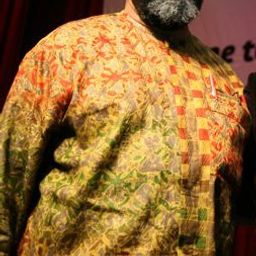
Prof. Dorit Kluge
Publications:
Monograph:
- Kritik als Spiegel der Kunst. Die Kunstreflexionen des La Font de Saint-Yenne im Kontext der Entstehung der Kunstkritik im 18. Jahrhundert, Kunst- und kulturwissenschaftliche Forschungen, Bd. 7, VDG, Weimar, 2009, ISBN 978-3-89739-622-7
- When art criticism enters early tourist guidebooks. Two case studies from the late 18th century. In: La guida turistica. Luogo d’incontro tra lessico e immagini dei Beni Culturali, Pisa/Florence, 2016. [in preparation]
- La genèse de la critique d’art et son impact sur la peinture. In: Genres littéraires et peintures, ed. by Anne-Sophie Gomez and Nelson Charest, Clermont-Ferrand, Presses universitaires Blaise Pascal, 2015, p. 246-262.
- Kunst und Kunstgeschichte im Deutsch-Unterricht. In: Visuelle Medien im DaF-Unterricht, ed. by Marc Hieronimus, Fachverband Deutsch als Fremdsprache (FaDaF), Göttingen, Universitätsverlag, 2014, p. 195-222.
- Inspiration française et/ou création autonome ? Le réseau des dans la deuxième moitié du XVIIIe siècle. In: Le Salon de l’Académie royale de peinture et sculpture : archéologie d’une institution, ed. by Isabelle Pichet, Paris, Hermann, 2014, p. 57-78.
- Frankreich als Inspirationsquelle oder längst überholtes Modell ? Die Berichterstattung zu den Dresdner Kunstausstellungen 1764-1806. In: Aufklärung und Hofkultur in Dresden, ed. by Roland Kanz and Johannes Süßmann, Das achtzehnte Jahrhundert 37 (2013) 2. Göttingen, Wallenstein Verlag, p. 262-270.
- „Es sollte Porträt seyn, und war Ideal“ Das Bildnis der Johanna Friederike Karoline von Hohenthal, geb. Gräfin Rex. In: Anton Graff – Porträts eines Porträtisten. Berlin, Wolff Verlag, 2013, p. 72-76, 196.
- La Font de Saint-Yenne (1688-1771) – un penseur des Lumières. In: Penser l’art dans la seconde moitié du XVIIIe siècle : théorie, critique, philosophie, histoire, ed. by Christian Michel and Carl Magnusson, collection d’histoire de l’art de l’Académie de France à Rome, n° 15, Rom, 2013, p. 205-219.
- Une œuvre d’art comme bien économique ? La politique artistique, les arts et la critique d’art en Saxe dans la deuxième moitié du XVIIIe siècle. In: Circulations et réseaux transnationaux en Europe (XVIIIe-XXe siècles). Acteurs, pratiques, modèles, ed. by Landry Charrier, Karine Rance, Friederike Spitzl-Dupic, Collection Convergences vol. 72, Bern, Peter Lang, 2013, p. 145-155.
Sessions in which Prof. Dorit Kluge participates
terça-feira 7 junho, 2016
Sessions in which Prof. Dorit Kluge attends
sexta-feira 3 junho, 2016
Find out more about all the eras that shaped Montréal with this interesting walking tour, from the foundation of Fort Ville-Marie in 1642 to today’s modern city. The historic heart of the city and its adjacent Old Port will help illuminate the story of one of the greatest cities in the Americas. Your guide will lead you through a maze of narrow streets where you can find a multitude of historic buildings. Explore the birthplace of our metropolis and experience a special voyage back in time! ...
Welcome addresses and cocktail, followed by the Concordia Signature Event "The Garden of the Grey Nuns". As the opening ceremony and cocktail take place in the former Grey Nuns' Motherhouse, recycled into campus residence and reading rooms by Concordia University, delegates will also have the possibility to discover the video Three Grey Nuns (3 minutes, by Ron Rudin and Phil Lichti. Three Grey Nuns recount their memories of communal life in the Grey Nun’s Motherhouse. Built...
Working with archival documents and the current-day morphology of the Grey Nuns' site, Dr Cynthia Hammond, Dr Shauna Janssen, in collaboration with Dr Jill Didur, will curate a series of installations and performances that speak directly to the rich heritage of a specific urban landscape: the gardens of the Grey Nuns' Motherhouse, now part of the Concordia University downtown campus. Visitors will have the opportunity to explore the lost working gardens of the Grey Nuns. As with other such...
sábado 4 junho, 2016
What if we changed our views on heritage? And if heritage has already changed? While, on the global scene, states maintain their leading role in the mobilization of social and territorial histories, on the local scale, regions, neighbourhoods and parishes have changed. Citizens and communities too: they latch on to heritage to express an unprecedented range of belongings that no law seems to be able to take measures to contain, often to the discontent of...
Heritage practices often lead to social exclusion. As an "Authorized Heritage Discourse" (AHD) (Smith 2006) may define what is considered to be heritage, a certain set of social values can come to exclude other values. By formulating heritage policies which reproduce the existing AHD government may further such exclusion. Every now and then AHDs are challenged, leading to what political scientists like Ross (2007; 2009) call "cultural contestations" between groups. These are surrounded ...
This festive event will offer delegates a taste of one of the iconic dishes of Montreal, the smoked meat sandwich, imported by Jewish immigration from Eastern Europe in the early 20th century. In particular, the tasting will allow a discovery of the products of the renowned international institution Schwartz's, the Hebrew Delicatessen for which Montrealers and tourists alike are willing to wait in long line-ups. During the tasting, “Chez Schwartz,” a documentary produced by Garry B...
Most of what we experience as heritage emerges into conscious recognition through a complex mixture of political and ideological filters, including nationalism. In these processes, through a variety of devices (museums, scholarly research, consumer reproduction, etc.), dualistic classifications articulate a powerful hierarchy of value and significance. In particular, the tangible-intangible pair, given legitimacy by such international bodies as UNESCO, reproduces a selective ordering of cul...
domingo 5 junho, 2016
Canal: Walking the Post-Industrial Lachine Canal (COHDS, 2013 - bilingual) is an audio-walk and booklet that takes listeners from the Atwater Market to the Saint Gabriel Lock, exploring the post-industrial transformation of a once heavily industrialized area. The Lachine Canal area has undergone dramatic changes, as mills and factories were closed and then demolished or converted into high-end condominiums. The adjoining working-class neighbourhoods ...
"What does heritage change?" is a multifaceted question to which the answer(s) are in primary respects related to real-life negotiations among different groups of citizens, cultures, races, ethnic groups, sexual identities, and social classes about received, official and/or widely accepted or accomodated intangible attributes, cultural traditions, historic monuments, buildings, and other transmitted or revived historical legacies. Heritage designated by and for whom, for what motivations, an...
segunda-feira 6 junho, 2016
In addressing the theme of this conference, we argue that archaeology, above and beyond the traditional goals of research and post-excavation analyses, may contribute to economic development, education and the creation of identities and communities. Our session "What does Heritage Change? Case Studies in Archaeology," is divided into two themes starting with archaeological practice through its legislation and management. Contract or commercial archaeology increasingly comprises the vast major...
Involving communities, visitors or the public is frequently presented as one of the major tasks of museums and heritage sites in current global movements toward new collaborative paradigms (Golding and Modest 2013; Watson and Waterton 2011). Co-production is a highly current issue, and a proposed emancipatory solution to the authorized heritage discourse, which seemingly has reached a critical juncture. Scholarship has echoed calls from communities for more direct involvement in the presentat...
Le patrimoine fait aujourd’hui l’objet d’attentions autant que d’agressions et de destructions. Cela peut s’expliquer par les difficultés de son identification ou de sa conservation. Cela peut plus profondément s’expliquer parce que, dès le départ, il célébre un événement ou conserve une mémoire qui peut être ou devenir une source de dissenssions et de conflits politiques. Enfin, sa reconnaissance suscite des gains économiques pour les uns mais des pertes pour les autres. Mais peut-être...
terça-feira 7 junho, 2016
As the interface between past and present, heritage is deeply involved in articulations of personal and group identity, working to unite and harmonize group relations, and, simultaneously causing frictions, fractions, and violence. Critical heritage theory reveals that values and approaches to heritage are articulated both within and across regions (such as Asia, or Europe). A vital, and as yet unanswered, question centres on the degree to which heritage in Asia fundamentally differs from ...
Si la ville moderne occidentale se transforme, sous l'action des aménageurs, en écho à des utopies, des programmes de développement et des intérêts économiques, on néglige trop souvent l'action quotidienne d'habitants et d'acteurs sociaux qui s'approprient les lieux et contribuent à les transformer. Dans cette mutation de la ville, le patrimoine se trouve à la croisée d'enjeux économiques et sociaux singuliers: d'une part il est convoqué par les aménageurs et les acteurs de la gentrification ...
The closing dinner of the conference, called “Pawâ” according to a French-Canadian tradition borrowed from the Native American lexicon, will be an opportunity to discover, in the heart of the Old Port of Montreal, an original culinary creation by the caterer Agnus Dei, from the renowned Maison Cartier-Besson in Montreal, leader in its field for its boundless creativity and event expertise. The dinner, in the form of stations, will offer delegates an exploration of Quebecois culinary heritage,...
quarta-feira 8 junho, 2016
||| Les Mohawks constituent la nation amérindienne la plus nombreuse parmi les dix différentes nations que compte le Québec. La nation mohawk compte près de 17 350 habitants. Il y en a 2 700 qui vivent hors réserve et les autres sont dispersés dans trois grandes communautés que sont : Kanesatake, Akwasasne et Kahnawà :ke. Située à proximité de Montréal, sur la rive sud du fleuve Saint-Laurent, la communauté de Kahnawà :ke compte près de 7 300 habitants. Elle est parmi les première...











